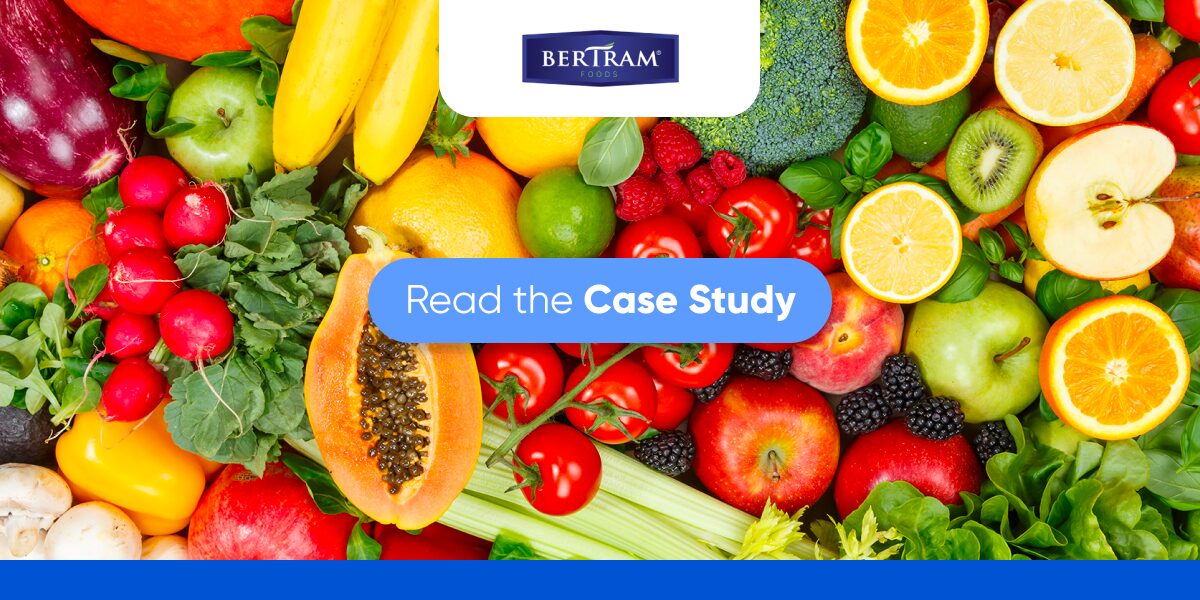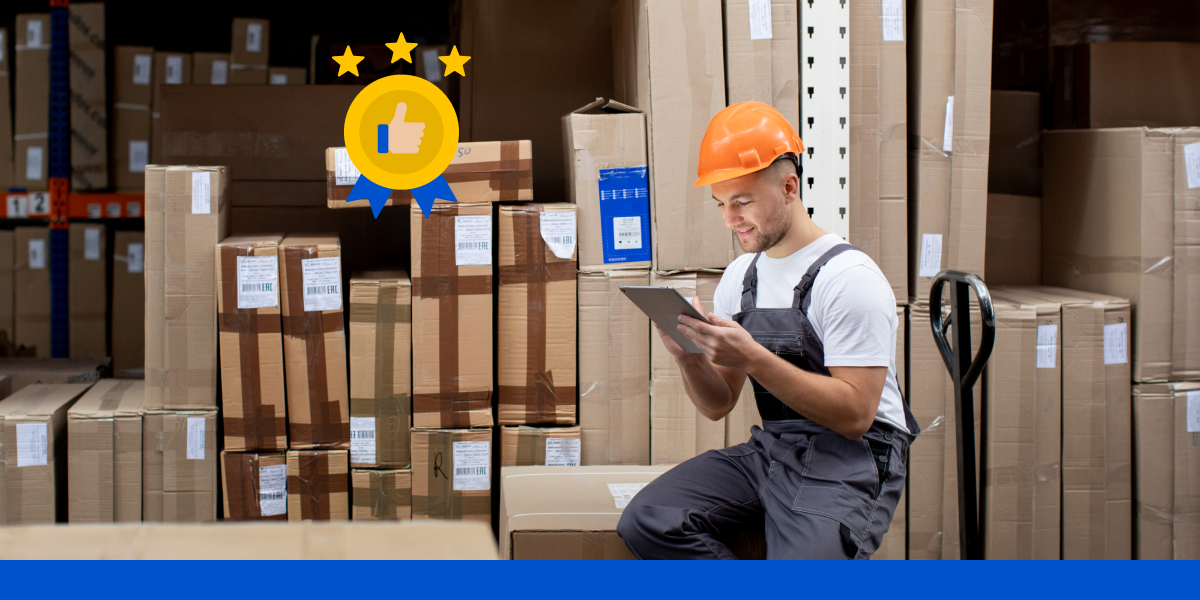For last-mile delivery operators the difference between thriving and not even surviving can come down to a single decision: choosing the right route planner app. But which one is that? The market is flooded with more choices than the cereal aisle in Sam’s Club.

Just as you might discount cereals that rely on sugar and food dyes for their appeal, route planners can be quickly put in two categories. Most are designed for lightweight delivery operations and they will fall short when tasked with the complex demands of enterprise-level logistics.
As they say, “You can’t drive a nail with a tack hammer.” For businesses managing bulky deliveries, food distribution, building supplies, or comprehensive third-party logistics services, finding a route planner that can handle heavyweight routing requirements isn’t just important, it’s critical. The wrong choice can lead to delayed deliveries, frustrated customers, and ballooning operational costs, while the right solution can transform your entire last mile operation from cost center to a competitive advantage.
Index:
Benefits of the Best Route Applications in Last Mile Delivery
The right route mapping app puts you in a position to save money and delight your customers—what more could a last mile delivery business ask for?
Here are some of the top line benefits of the right software:
- Significantly faster routing and scheduling
- Improved ETA accuracy and reduced late deliveries
- Improved customer satisfaction thanks to increased on-time delivery rates
- Better capacity utilization across your fleet/logistics network
- Improved visibility into deliveries across the board
- Smoother integration between planning and execution
In this way, you can think of a route mapping app as a potential ROI driver. Investing in the right one can put you in a position to stay competitive while getting the most out of your technology stack.
What Should Modern Routing Apps Offer?
So how are you supposed to separate the contenders from the list of route optimization software options you’re presented with? Start by seeking out routing solutions that offer these 5 capabilities:
1. Support for Multiple Use Cases Within the Same Route Planner App
Simply put, your routing engine needs to be able to do more than just find the shortest route for a given set of stops. This will depend on the type of deliveries your business runs, of course, but it might need to handle overnight routes for longer journeys while ensuring compliance with hours of service regulations.
It might have to enable static route planning for your recurring customers while offering dynamic routing on top of that for new orders. Or it might need to support installations, pickups, returns, and haulaways—to say nothing of potential use cases like routing sales appointments or collection stops.
In all likelihood, only one or two of those use cases will apply to you—so it might seem logical to seek out a specialized solution that only supports, say, sales routing. But a truly robust route planner app for delivery drivers that can handle multiple use cases will provide better support.
2. AI-Powered Predictive ETAs
When you’ve given the customer a time window for the delivery, even a relatively wide one, you need to be confident that you’re going to deliver at the right time.
One way to make this happen is to add a lot of buffer between stops so that there’s no chance that the driver runs late—but this obviously has a huge tradeoff in terms of efficiency. You can’t maximize the number of stops per day (and thus minimize cost per delivery) if you’re paying drivers just to wait for the delivery window to come around. At the same time, an aggressive schedule increases the odds that your driver will miss the window entirely.
The solution to this balancing act? Leveraging AI and machine learning to accurately predict delivery ETAs. If you can find a delivery routing app that offers this kind of functionality, you can get more out of your delivery capacity without sacrificing customer experience.

3. Configurable Service Times
Dropping off a package might only take a moment, but delivering a pallet of soft drinks to a grocery store can be a lengthier process time-wise. If you’re delivering a dishwasher to an apartment building and you need to haul away the customer’s old dishwasher, that’s going to take even longer.
If your routing treats all of these deliveries or services as if they take the same amount of time, then you’re setting yourself up for late deliveries (and early deliveries, which can be just as bad for some customers). For one or two stops on a route, this might not be a huge deal—but across a large number of stops across multiple routes, it can create chaos and uncertainty.
Luckily, robust route optimization solutions should give you the ability to easily configure variable service times for different delivery and service types. By making this easy for planners to incorporate into their processes, the right delivery routing apps will make accurate routing and ETAs second nature.
4. Equipment and Crew Matching
Google Maps has no idea what the right kind of truck is for a grain or fuel delivery (for that matter, it doesn’t know how fast a truck can travel compared to a car). Even solutions that can handle different vehicle types and provide routes that actually work for trucks might not be able to match the right personnel to the right job.
But there are route optimization solutions that offer both of these capabilities. This means that at the planning stage, you can be sure that you have the right trucks and the right teams going out on the right routes—all while maintaining route efficiency. It’s the last part that’s particularly crucial: if you were starting with an optimized route and adjusting it by hand to get the right jobs onto the right trucks, the odds are that your route would become much less efficient by the time you had finished adjusting it.
If your business involves multiple different equipment types and different services being performed by delivery crews, this kind of capability is a must.
5. Skill-Based Routing
This falls into a similar category to the one above, but it takes on a financial aspect. Skill-based routing isn’t just about using the right personnel for the job—it’s about reserving your high-skilled (and thus more highly-paid) drivers and technicians for the jobs that really require them.
When your route optimization software has this kind of routing built in, you can easily ensure that you’re assigning jobs in a way that’s cost-effective. After all, you don’t want to send a skilled technician out on an across the threshold delivery that could easily have been done by someone else, while skilled jobs pile up unscheduled.
This kind of routing functionality helps you optimize costs and boost customer experience across the board if your business has drivers and technicians with multiple skill levels. Taken as a piece with the other features we’ve been discussing, it can form the basis of a real digital transformation of the entire last mile route optimization process.
Finding the Best Route Planner App for Delivery Drivers
The best route applications aren’t just designed to streamline an individual workflow or speed up a particular part of the routing process. Rather, they’re meant to help you level up your capabilities and form the bedrock of smarter last mile workflows from end to end. With smarter, more connected, and more efficient route optimization capabilities in place, you tackle the whole last mile journey more efficiently from end to end.
For instance, when you’re confident in your delivery ETAs, you can improve the delivery experience that you offer to customers—leveraging real-time delivery notifications and live delivery tracking to help ensure visibility into the delivery at every stage. When your deliveries are on track, customers will feel like you value their time and prioritize their needs.
At the same time, when nearly everything is going right, your team can focus more easily on the things that aren’t. This enables you to manage by exception during the last mile delivery process, which can again help improve delivery outcomes, boost customer experience, and decrease delivery costs.
There’s never been a better time than right now to seek out new route planner apps—the trick is just to find the best route applications for your use case.
